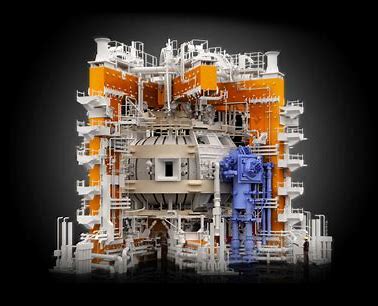JET.jpg

Part 1 of 2 Parts
Scientists have started to decommission one of the world’s earliest nuclear-fusion reactors, forty years after it began operations. Researchers will study the seventeen-year process of dismantling the Joint European Torus (JET) near Oxford, UK, in unprecedented detail. They will use the knowledge to make sure future fusion power plants are safe and economically viable.
Rob Buckingham leads the decommissioning for the U.K. Atomic Energy Authority (UKAEA), which oversees JET. He said, “We are starting to think seriously about a fusion power plant This means thinking about the whole plant life cycle.”
The nuclear fusion of atoms is the process that powers the Sun. If it can be harnessed, it could provide humans with a near-limitless source of clean energy. Creating the conditions for fusion in power plants and exploiting the resulting energy will require complex engineering that hasn’t yet been developed. Some researchers think that this means that commercial fusion power is still many decades away. However, some of the organizations researching nuclear fusion are estimating commercial nuclear fusion reactors arriving in the next five to ten years.
Researchers are moving ahead with designs for the first commercial fusion reactors as excitement about fusion power grows. In 2022, JET broke the record for the amount of energy created through fusion. And the U.S. National Ignition Facility (NIF) in Livermore, California now routinely generates more energy from a fusion reaction than was put in. The NIF calculations do not include the entire energy requirements of running the facility. Fusion plants would need to exceed this level of energy expended to truly ‘break even’, but physicists have celebrated the milestones.
JET is important because the facility is a test bed for ITER which is a twenty-two billion dollar fusion reactor being constructed near Saint-Paul-lez-Durance, France. ITER aims to prove the feasibility of fusion as an energy source in the 2030s. Jet has assisted decisions on what materials to build ITER with and the fuel it will use. JET has been crucial to predicting how the bigger experiment will behave.
The most difficult part of decommissioning the JET site will be dealing with its radioactive components. The process of nuclear fusion does not generate waste that is radioactive for millennia, unlike nuclear fission which powers today’s nuclear reactors. But JET is among the small number of experimental fusion facilities worldwide that have used significant amounts of tritium which is a radioactive isotope of hydrogen. Tritium, which will be used as a fuel in some future fusion plants including ITER, has a half-life of 12.3 years. Its natural radiation, alongside the high-energy particles it releases during fusion, can leave reactor components radioactive for decades.
Anne White is a plasma physicist at the Massachusetts Institute of Technology in Cambridge. She says that decommissioning a fusion experimental facility doesn’t mean “bulldozing everything within sight into rubble and not letting anyone near the site for ages”. Instead, engineers’ priorities will be to reuse and recycle parts when possible. This process will include removing tritium where possible, says Buckingham. Removing tritium reduces radioactivity and allows tritium to be reused as fuel. “The sustainable recycling of this scarce resource makes economic sense,” he says.
Please read Part 2 next